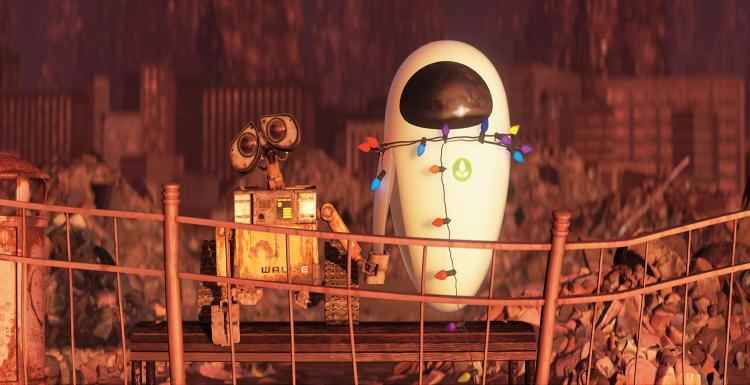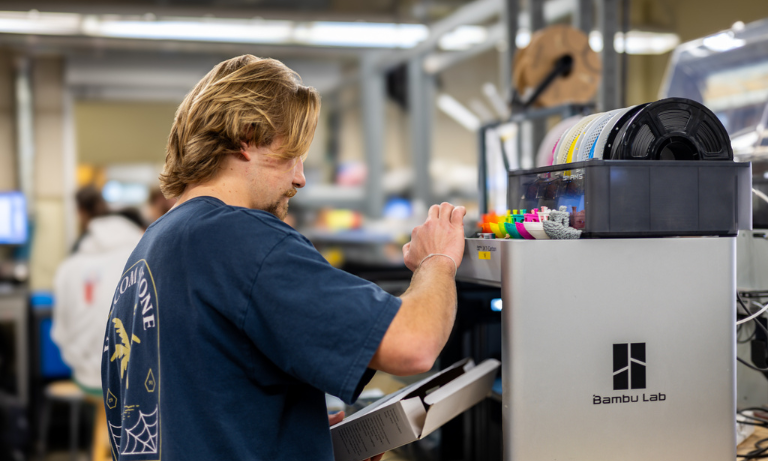When it comes to recruiting females to the male-dominated computer science field, Danielle Feinberg is a bit of an ace in the hole. After all, Feinberg works at Pixar Animation Studio, which has created many of the most beloved films of the past two decades, including “Toy Story,” “Finding Nemo,” “Brave,” and Monsters, Inc.”
You can make movies with math, science and code! Feinberg tells them, then shows them all the cool things she does for a living.
“It’s an easy sell,” said Feinberg, who is a director of photography for lighting at Pixar.
But studying computer science in the 1990s wasn’t always easy at Harvard, where Feinberg found herself outnumbered by males, who accounted for close to 90 percent of the classes.
“It was clear to me why some women were like, ‘Forget it – I’m out of here,’” she said. “When you walk into the room, and you’re one of the few people who look the way you look, you immediately feel like you don’t belong there.”
Feinberg will discuss her experiences Thursday (Feb. 21) at 11 a.m. in the Advanced Technologies Lab. The highly visual presentation, titled “The Art and Science of Bringing Imagined Worlds to Life,” is part of the College of Engineering’s Diversity and Inclusion speaker series.
While being underrepresented seemed to magnify every mistake in college, Feinberg had been enamored with programming since she was an elementary school student who took an after-school programming class.
“By the time the people started telling me, ‘Girls don’t do that,’ I didn’t care what they had to say because I loved it,” said Feinberg, who mentors girls on STEM careers.
She might have pursued a more traditional computer science career had a computer graphics lecturer not shown the class some Pixar short films – precursors to “Toy Story,” the first full-length Pixar movie, which became a game changer for computer animation.
“As soon as I saw those short films, I thought, ‘This is 100 percent what I want to do,’” she said.

After graduation, at 22, she actually landed a job at Pixar, first in an entry-level technician on the movie “A Bug’s Life.” She quickly rose through the ranks, learning her trade from a mentor named Sharon Calahan.
“I got to learn from the best person in the world,” she said.
In her inspiring TED Talk, Feinberg used before-and-after visuals to show how lighting greatly enhances the dramatic look of Pixar films – from the way sun beams move with the water in “Finding Nemo” to the way reflections off an inner lens on Wall-E’s binocular eyes provides human-like emotions.
The lighting is the last step in the creative process, she said, and at times, lighting experts can be indecisive.
“We do obsess over it – completely,” she said.
The team gets visuals cues from real life – they usually take research trips and document images with photos and video. But they also avoid being overly realistic.
Pixar’s most spectacular use of light might be from the movie “Coco,” which explored the Day of the Dead holiday with a fantasy afterlife. One memorable scene featured over 8 million lights, creating a visually stunning illuminated world viewers were absorbed into on big screens worldwide.
As awe-inspiring as the scene was, it was intimidating for those who had to create it.
“This thing had been looming over us for months and months – maybe years,” Feinberg said.
“You walk around and think, ‘What makes this Mexico?’”

Despite having seen “Coco” about 1,000 times for work, she still teared up when she saw it in the theater.
“The moment at the end with Mama Coco still gets me even now,” she said.
After 20 years of working at Pixar, she views the world differently than many, often noticing nuances of light in the real world.
“There’s a little voice inside my head that’s annoying,” she said.
That voice might notice how room light nicely bounces off someone hair, she said, or how someone’s teeth could be brightened.
“If people could hear it, it would be really embarrassing.”


